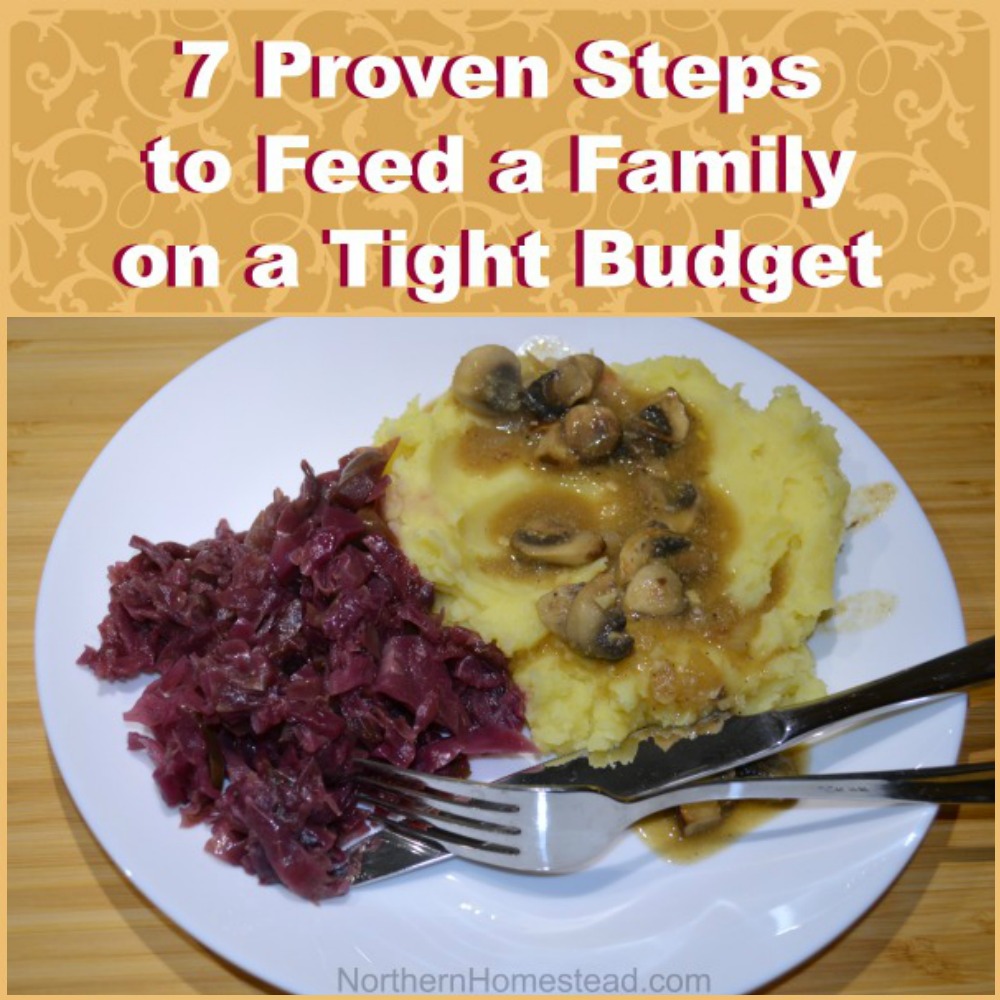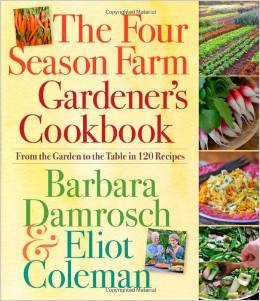Feeding Family on a Tight Budget

We have been on a tight budget on and off for many years, for different reasons and in different countries (even Continents). The 7 proven steps to feed a family on a tight budget work no matter where you are. Neither am I giving you an amount nor a meal plan. I do not find them very helpful. Every family is different and every region has different food prices. It does not help you if I can get a gallon of milk for $2 (I wish!) and write about it, if the cheapest you can get it is $5. To feed a family on a budget is hard, if you are in this situation, let me encourage you: Do not give up, it is doable! Others have gone down this road and made it.
1. Learn to cook from scratch
Sorry for starting with the word learn, but feeding a family on a budget, and feeding them well is a learning process, and it is so worth it. Simple ingredients are way cheaper than ready-made food. Do the math for yourself in your grocery store. Here, compare 1 pound of fresh potatoes (for us about $0.50) to one pound of french fries ($2.00), hash browns ($1.50) or chips ($5.00 – not just a bag – a pound!). Are you shocked? Plus, potatoes are so easy to grow and some farmers have constantly too many and would willingly give you some for free. The important thing is you know how to prepare simple wholesome meals from scratch.
2. Go for wholesome, high nutrient ingredients
The goal is to feed, not just to fill up your family. Potatoes, beans, whole grain are cheap foods that satisfy. Wholesome foods like greens, fruits, and vegetables are high in nutrients that will feed you. Dry beans are easy to can yourself.Sprouts and microgreens are so easy to grow at home and are packed full of nutrients. Processed food is not healthy for any budget.
3. Shop by special sales not by a meal plan
This is controversial. How many times have you heard that you can save so much money on food if you only have a meal plan? There is some truth to it. If you buy what you will use, you will not waste any produce. But on a tight budget, it is better to learn to shop by special sales. Again, this is a learning process, but worth it. If you are making simple, wholesome meals from scratch it is not difficult. Cooking freestyle, not tied to a plan or recipe is a great ability to have if you are on a budget and/or a gardener. Things do not grow and ripen according to our meal plans, they just ripen whenever the conditions are right. To know how to make a meal from what is grown, or is on sale, can help you a lot. Read more about our no-plan meal planning method.
4. Eat some and leave some
'Who eats a bit and leaves a bit has two meals' – was one of my mom's favorite sayings. Firstly, of course, overeating is not good on any budget. But also it is a good way to remember to leave some veggies for homemade vegetable soup. Make your own vegetable broth. Make casseroles out of leftovers. Those are all yummy, but basically free meals.
5. No chips, crackers, and soft drinks
This is a hard one, I know. I used to be a real chips lover. Friends gave us a joke wedding gift: a huge basket filled with unpacked potato chips. They knew me, the chips would be gone in no time. Chips, however, do not feed you, they just fill. I learned to go without them, and honestly, I do not miss them. Wholesome, highly nutritious food satisfies so much more. Stop eating junk food and drinking carbonated drinks. Stop using artificial and processed food, your budget and your health will thank you. But you might say crackers are not junk – well, if you read the labels… plus they are extremely expensive if you do the comparison. 1 pound homemade bread costs under a dollar, while crackers cost $6.00!
6. Minimize snacks
Snacks are a by-product of abundance. They are often packed full of unhealthy ingredients and are expensive. Sure, there are healthy snacks, but they are even more expensive. Even if you just pay a dollar for a bag of cookies, comparing to whole foods it is a lot. Plus they bring especially children but also adults to a cycle of eating snacks, not being hungry at mealtimes, and eating snacks right after meals again. A wholesome meal, however, on an empty stomach, fills you up for hours. Snacks are not needed any longer.
7. Grow your own food
Growing food is the cheapest way to get it. We write a lot about gardening. I hope you can find helpful tips and ideas to grow a garden if you haven't yet. If you do not own some land to grow a garden, there are many ways to grow food without owning a speck of land. However, if you do not know how to prepare a meal with homegrown goodies, or only like to eat highly processed foods and snacks, the garden will not help you much. You see how it all works together.

For centuries people have lived like this: Grown wholesome food, made meals out of it, and fed their families. Today so many have lost the ability. The book "The Four Season Farm Gardener's Cookbook" is packed full of tips to do just that. Let's go back to the basics, back to real food. Following these simple steps, you will not only save money and eat well, but also be healthier. Tight budget times can be real blessings.
Need more help to Feed a Family on a Budget?
Get the Money Saving Worksheets from A Modern Homestead.
After all, everyone wants to eat better, save more money, and keep the products they love. Learn how a family used to spend over $1,000 a month to eat the SAME foods they are eating now!!
Here are the exact steps, tips, and tricks they use to keep their food budget under $200 a month.

We invite you to subscribe to Northern Homestead and follow us on Instagram,Facebook or Pinterest for more great tips.
Source: https://northernhomestead.com/feed-a-family-on-a-budget/
Post a Comment for "Feeding Family on a Tight Budget"